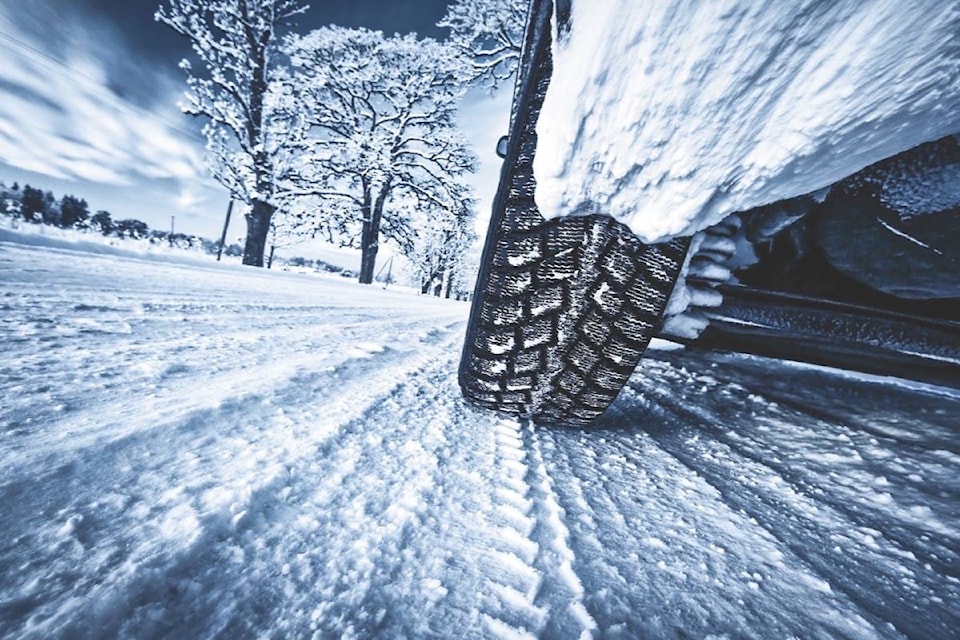Not too long ago, emergency personnel were involved in a road stop outside the Quesnel Museum to remind motorists it’s time to Shift Into Winter. There is no magic spell and it isn’t rocket science to prepare for winter driving.
We have been told over and over again that there are certain chores that must be done to ensure we can get from point A to point B without sailing into to someone or some thing, rolling over into a ditch or something much, much worse – getting into a life-alternating situation that will change the lives of our families forever.
So, obviously, we need to properly prepare for winter driving. Let’s start by getting proper tires on our vehicles.
Quesnel RCMP Cpl. Kurt Banse, who kicked off the Shift Into Winter in this area, says the message of not using all-season tires during winter has worked well over the years.
However, he adds true winter tires are the best bet for winter driving in this neck of the woods.
Winter tires provide better stopping power and traction in cold weather and snow.
Check for wear before mounting and check tire pressure every few weeks.
Having good, working windshield wipers and plenty of washer fluid is another key for us in the Interior who share the highways and byways with the big rigs.
If we get behind one of these rigs or they pass us or we pass them, we’re going to get sprayed with a mixture of water, sand and road grime.
We’ll need those wipers to clear the windows.
Prior to dusk, we have to make sure our headlights and taillights are cleared of grime before we head out for a drive. And we should wipe them clean every time we stop for food or fuel.
Another easy precaution is checking our local traffic and weather report or visit DriveBC.ca before heading out.
We all have to learn to avoid driving if the weather is bad – holding off for an hour or two can make a big difference.
If we can, we should wait until the weather improves. If we don’t have to go, then maybe we shouldn’t take a chance driving. When we do go for a winter drive, we should slow down and give ourselves more time to reach our destinations.
We should remember speed limits are based maximum speeds under good road conditions.
So, slow down!
We need to leave lots of space between ourselves and the person we’re following. A lot of our vehicles are four-wheel drive or all-wheel drive or have a slide indicators. However, they don’t make you stop quicker on slippery roads.
So, we have to slow down and leave more room between vehicles.
Please keep these things in mind this winter and let’s arrive home alive.
Ken Alexander,
Quesnel Cariboo Observer
